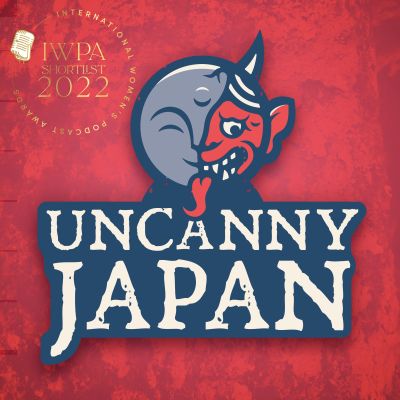Speculative fiction writer, long-term resident of Japan and Bram Stoker Award finalist Thersa Matsuura explores all that is weird from old Japan—strange superstitions, folktales, cultural oddities, and interesting language quirks. These are little treasures she digs up while doing research for her writing.
https://www.uncannyjapan.com/
episode 14: Sokushinbutsu: The Corpses of “Living” Buddhas
Listen to me talk about this wonderfully surreal thing I found: Living Buddhas (ikibotoke, 生き仏 or sokushinbutsu, 即身仏). The thing is, they're not really alive, at least not anymore. *cue scary music*... no, seriously, cue the scary music, things are going to get weird.
Also, because I didn't mention it in the podcast the background of this month's Uncanny Japan was recorded at a local temple on New Year's Eve at midnight. The sounds you hear are the people milling around wishing each other a Happy New Year and the temple bell being rung 108 times (to ring out our humanely sins). The latter thing is called Joya no Kane.
If you're interested in ikibotoke/sokushinbutsu or self mummification, I found a page in Japanese about a route you can travel to see all the Living Buddhas in their respective temples up in Northern Honshu, in Yamagata Prefecture. Below I translated the highlights:
- Start at Nangakuji (南岳寺), a nine-minute car ride from Tsuruoka Station (Yamagata Prefecture). Here you can find TetsuRyouKai, who became a sokushinbutsu in 1881.
- A 30-minute drive from there will take you to Honmyoji (本明寺) where you can see the Living Buddha, Honmyouji Shonin.
- Next take a 20-minute jaunt to 龍水寺大日坊・湯殿山総本寺 (Yudonosansouhonji). Here you'll be able to pray to 真如海上人.
- Hop back in your car and drive 8-minutes to Yudonosan Churenji (湯殿山注連寺). The sokushinbutsu at this temple passed away in 1829.
- Lastly, drive one hour to Kaikouji (海向寺) . Here there are two Living Buddhas: Chukai (忠海上人)who became an ikibotoke in 1785 and Enmyokai (円明海上人) who became an ikibotoke in 1822.
It is said that these Living Buddhas can answer your prayers. So there's that. Also, if you're into amulets, the self mummified monks' robes are changed occasionally and the cloth from the old garments is used to make omamori.
Please join our community forum! https://japanforum.uncanny.productions/
Patreon: https://www.patreon.com/thersamatsuura
Website: https://www.uncannyjapan.com/
YouTube: https://www.youtube.com/@UncannyJapan
Mastodon: https://famichiki.jp/@UncannyJapan
Twitter: https://twitter.com/UncannyJapan
Facebook: https://www.facebook.com/uncannyjapan/
Instagram: https://www.instagram.com/uncannyjapan/
Buy Me a Coffee (one-time contribution): https://buymeacoffee.com/uncannyjapan
Notes: The intro/outro music of Uncanny Japan is a song by Christiaan Virant (“Yi Gui” from Ting Shuo). The whole album is just gorgeous as it everything else by FM3.
